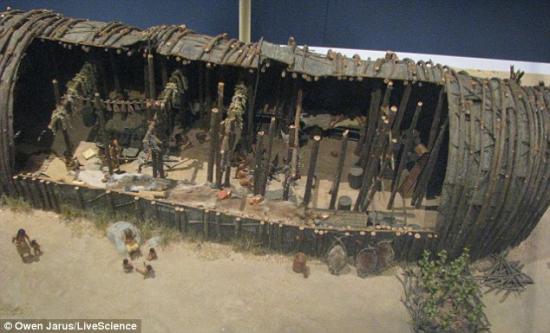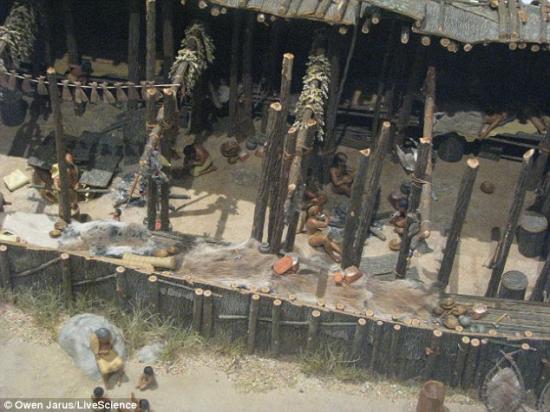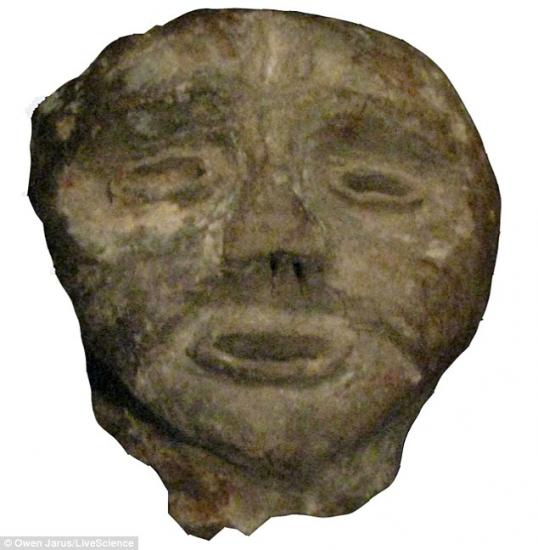'The ancient New York City of Canada': Archaeologists unearth 'cosmopolitan' 1500s settlement near Lake Ontario which was the size of Manhattan
Source - http://www.dailymail.co.uk/news/article-2172652/Archaeologists-unearth-cosmopolitan-1500s-settlement-near-Lake-Ontario-size-Manhattan.html?ito=feeds-newsxml
- Experts unearth 2,000 artifacts from site near Lake Ontario
- 'Mantle site' is thought to have had 2,000 inhabitants in 1500s
- Evidence that locals even acquired European goods a century before European explorers arrived in the region
-
Scientists have unearthed evidence of a 500-year-old settlement near Lake Ontario so cosmopolitan it has been branded the 'ancient New York City of Canada'.
The recently-discovered 'Mantle site' is thought to have had almost 2,000 inhabitants in a 'cosmopolitan' area in 1500 A.D. which was the size of Manhattan.
Archaeologists say pottery and art found at the site shows how inhabitants had 'unprecedented' trade with the Iroquois - the nations and tribes of indigenous North America.

A model representation of a longhouse from the Mantle site, displayed at the Royal Ontario Museum. Parts of the longhouses were just some of the 2,000 artifacts found on the site dating from the 1500s
But amazingly, the same groups also acquired European goods a full century before the first European explorers arrived in that region.
Despite its huge size, the giant site is thought to have remained undiscovered for so long because its longhouses were primarily made of wood.
Among the stunning finds made on the Mantle site are the earliest European goods ever found in the Great Lakes region of North America.
Experts recently found copper beads, wrought iron objects, as well as effigies painted into pottery.
The discoveries - part of the 'largest, most complex, cosmopolitan village of its time - have been heralded by experts as an 'Indiana Jones moment' in archaeology.
Also uncovered during excavations on the site between 2003 and 2005 were 98 longhouses, a palisade fence of three rows, and about 200,000 artifacts.
A wrought iron mask found at the site was traced to northern Spain, with its material suggesting it came from the 16th century.
The hoard of artifacts will be revealed in a documentary this week on the History Channel in Canada.

Evidence found at the Mantle site showed that its inhabitants had 'cosmopolitan' lives in a settlement the size of Manhattan

Signs of life: This human pipe effigy gives a fascinating glimpse into what was found at the Mantle site near Lake Ontario
Ron Williamson, an archaeologist who led dig efforts at the site, said in the programme: 'This is an Indiana Jones moment, this is huge.
'It just seems to be a game-changer in every way.'
Williamson, the founder of Archaeological Services Inc., a Canadian cultural resource management firm that excavated the site, told LiveScience: 'It's the largest, most complex, cosmopolitan village of its time.
'All of the archaeologists, basically, when they see Mantle, they're just utterly stunned.'
Jennifer Birch, a post-doctoral researcher at the University of Georgia, said in the documentary: 'When you think about a site like Mantle, 2,000 people, massive stockade around a community, a better analogy is that of a medieval town.
'While the cultures are very different, the societal form really isn't.'
VIDEO = http://www.youtube.com/watch?v=i2WgttqAR7Y
Read more: